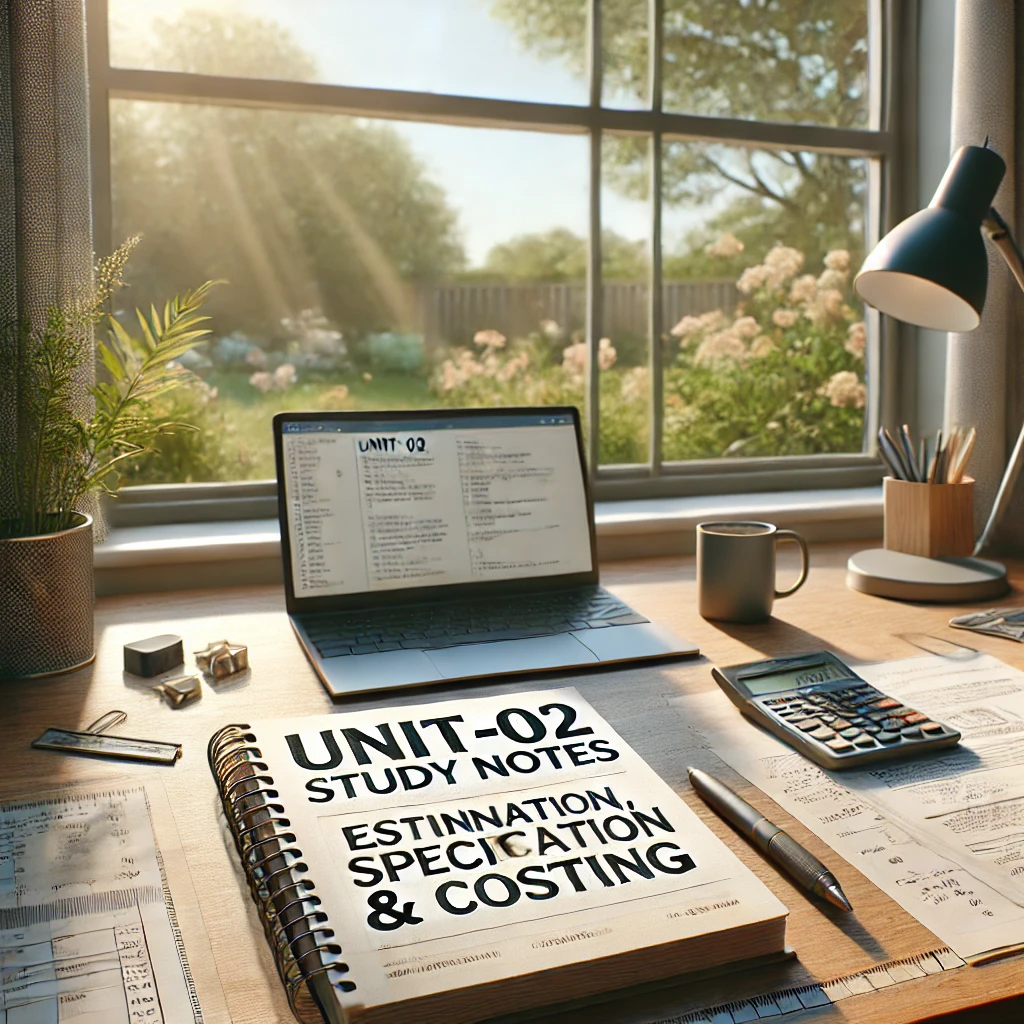Unit-04: Study Notes for DS369
Introduction to Tendering
Tendering is a formalized procedure by which suppliers or contractors are invited to bid for providing goods or services. In architecture and interior design practice, tendering plays a significant role in procurement and project execution.
Essential Components of Tender Documents:
Tender documents provide essential information that enables contractors to submit accurate and competitive bids. Typical tender documents include:
-
Notice Inviting Tender (NIT):
- Project description.
- Eligibility criteria.
- Submission deadline.
- Contact details for clarification.
-
Form of Tender:
- Standard format for bid submission.
- Details of bidder including name, address, and registration details.
-
Conditions of Contract:
- General Conditions (standard terms).
- Special Conditions (project-specific terms).
-
Specifications:
- Material and workmanship quality.
- Technical standards to be followed.
-
Drawings and Plans:
- Architectural and interior design drawings.
- Layout and detailed design specifications.
-
Bill of Quantities (BOQ):
- Quantitative descriptions and approximate quantity of work items.
- Structured into clearly defined work elements.
-
Schedule of Rates and Prices:
- Unit prices for various items to facilitate bid comparison.
-
Addenda (if any):
- Revisions or clarifications issued after tender document release.
Preparation of Schedules and Progress Charts:
Project scheduling and progress charts are critical in managing timelines, resources, and tracking progress:
-
Bar Chart (Gantt Chart):
- Visual representation of project tasks over time.
- Clear identification of project duration and task sequences.
-
Critical Path Method (CPM):
- Identification of longest path through the project schedule.
- Determines minimum project duration.
-
Milestones and Timelines:
- Setting significant project milestones.
- Defining specific target dates.
Writing Schedules for Various Works:
A. Civil Work:
- Excavation, foundation, masonry, plastering, concreting, reinforcement details.
- Clear specifications on work sequence, duration, and quality benchmarks.
B. Furniture Items:
- Furniture plans indicating types, dimensions, material specifications.
- Clear guidelines on installation sequence and finish quality.
C. Finishing Items:
- Paint schedules (types, brands, coats, finishes).
- Flooring schedules (material type, laying patterns, joint detailing).
- Ceiling and wall finishes (materials, treatment, textures, patterns).
D. Services:
- Plumbing layout with detailed pipe routing, fixtures, and fittings.
- Electrical schedules specifying wiring types, fixtures, controls.
- HVAC schedules detailing equipment, ductwork, installation methods.
Study of Units and Mode of Measurements:
Proper unit selection and measurement techniques are crucial for consistency, accuracy, and standardization:
- Length: Measured in meters (m).
- Area: Measured in square meters (m²).
- Volume: Measured in cubic meters (m³).
- Numbers (Nos.): Countable items such as furniture, sanitary fixtures.
- Weight: Measured in kilograms (kg) for items like steel reinforcement.
Modes of Measurement Reference:
- IS:1200 standards in India.
- Standard Methods of Measurement (SMM).
Calculation System for Quantities:
A. Furniture:
- Count per unit/item.
- Each item specified with dimensions (length x breadth x height), finishes, and quantities clearly listed in BOQ.
B. Wall Finishes:
- Surface area measured in square meters (Length x Height).
- Deduction of openings such as doors/windows from total measured area.
C. Floor Finishes:
- Surface area measured in square meters.
- Account for patterns, skirting, and wastage allowances.
D. Civil Works:
- Volume calculation for items like concrete, brickwork (length x breadth x thickness).
- Area calculations for plastering, painting.
E. Plumbing Works:
- Linear meter measurements for pipes.
- Count per unit/item for sanitary fixtures.
- Identification and measurement of accessories, joints, and fittings.
How useful was this post?
Click on a star to rate it!
Average rating 0 / 5. Vote count: 0
No votes so far! Be the first to rate this post.





